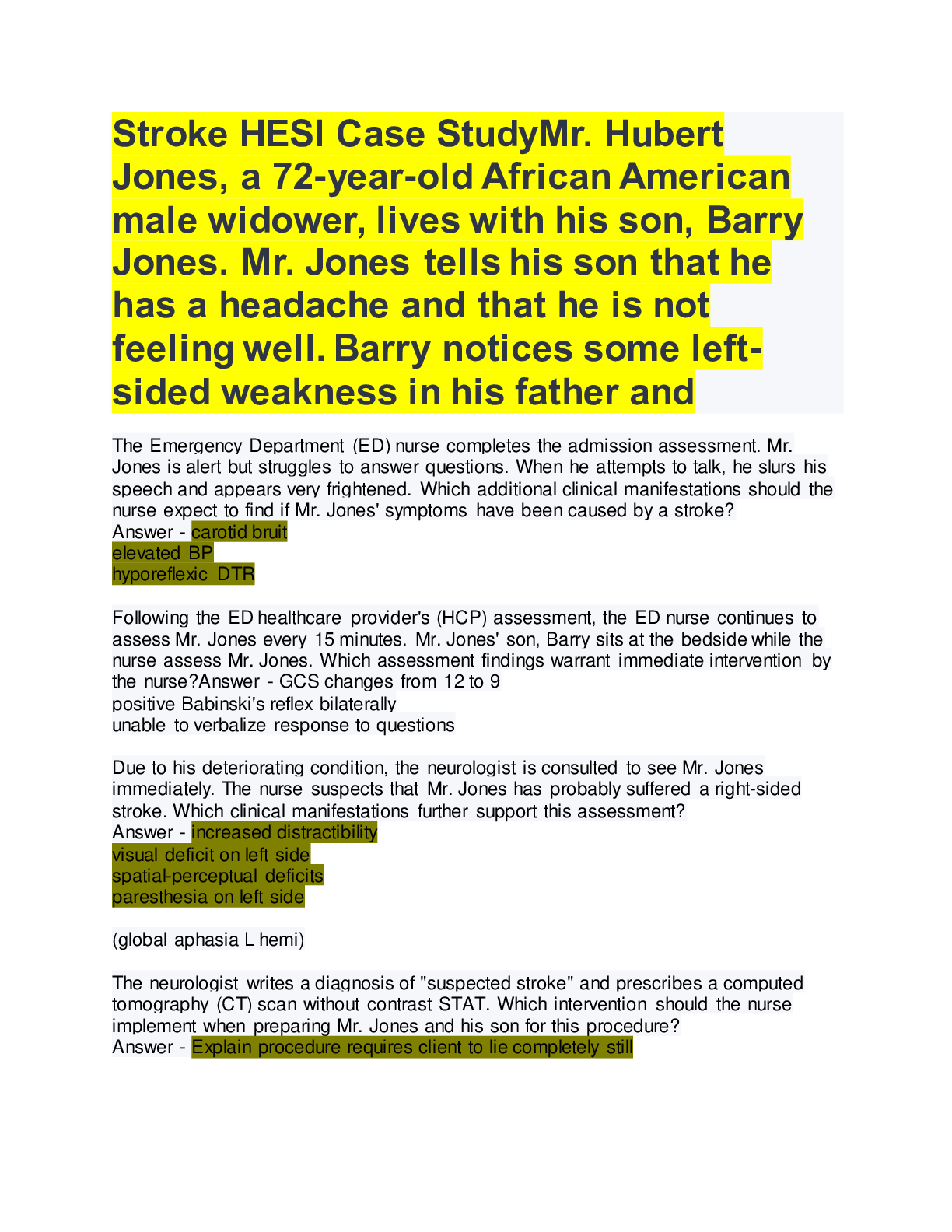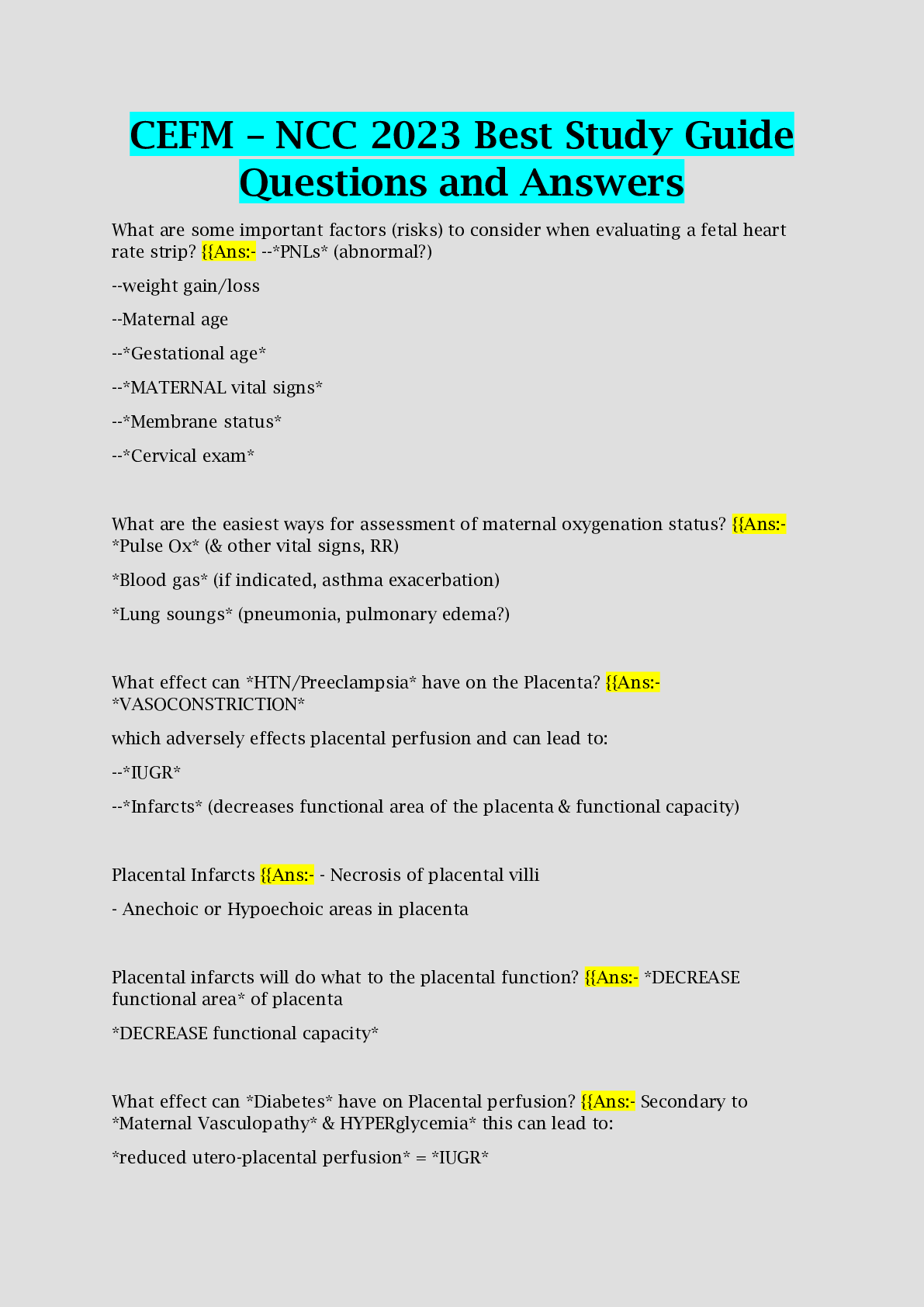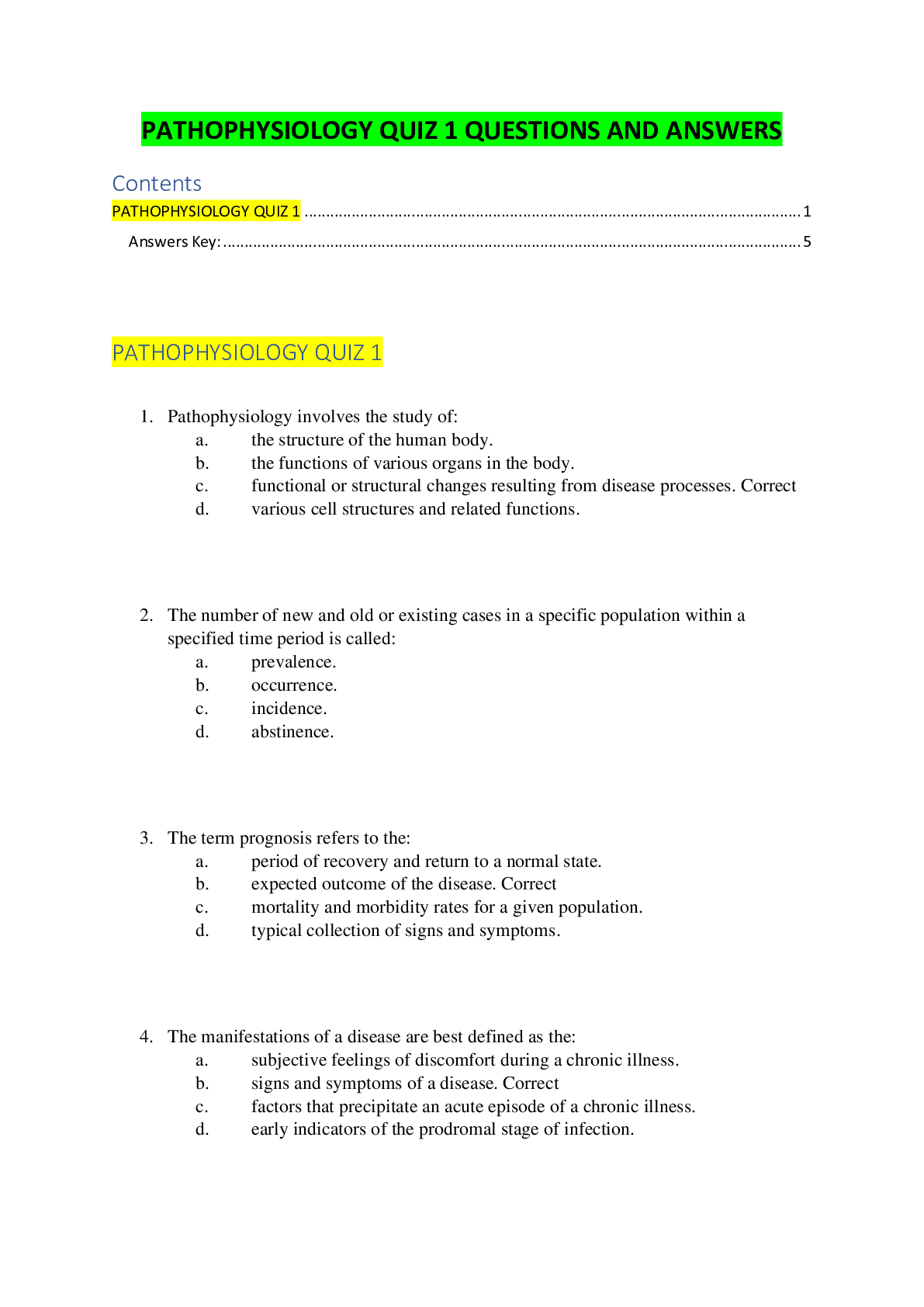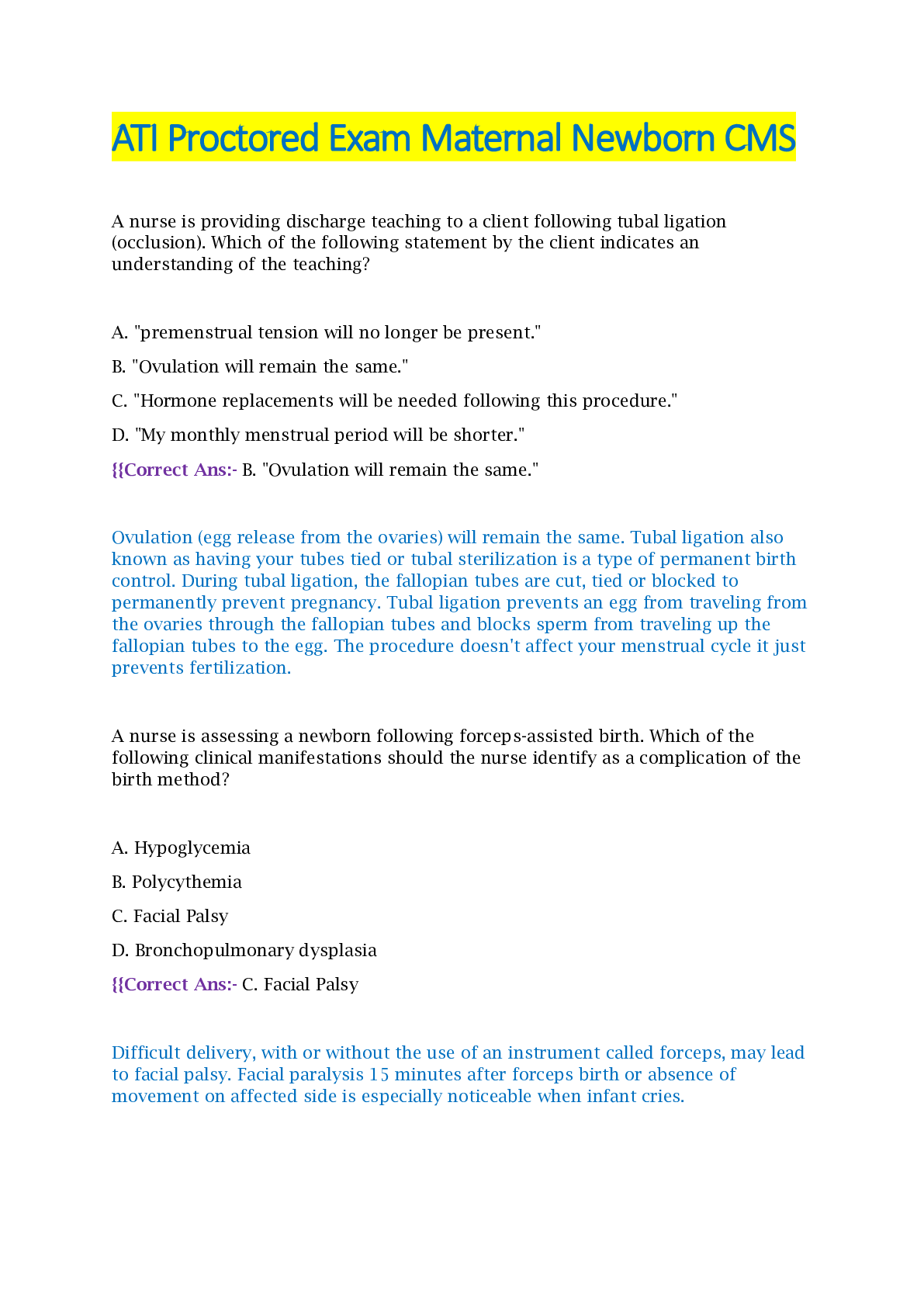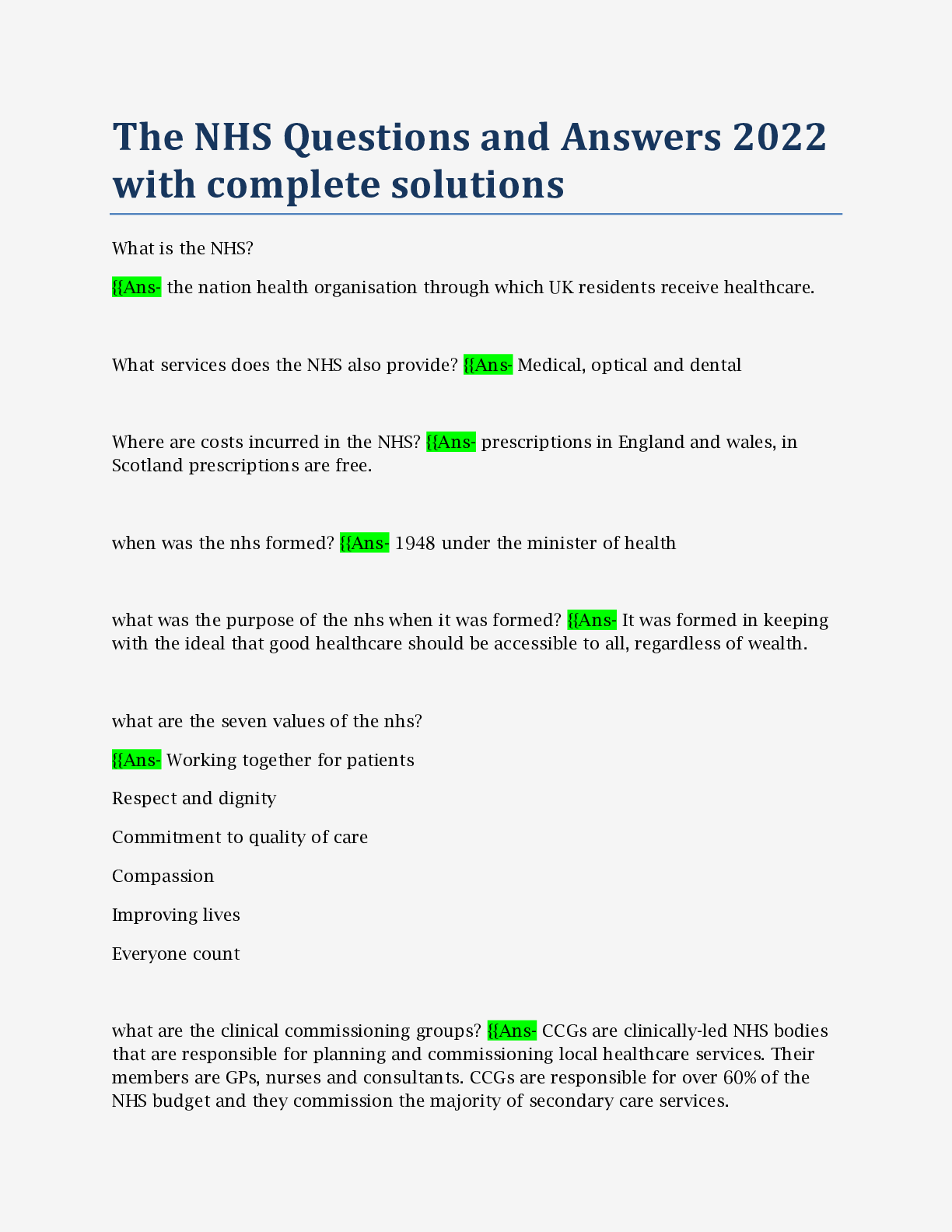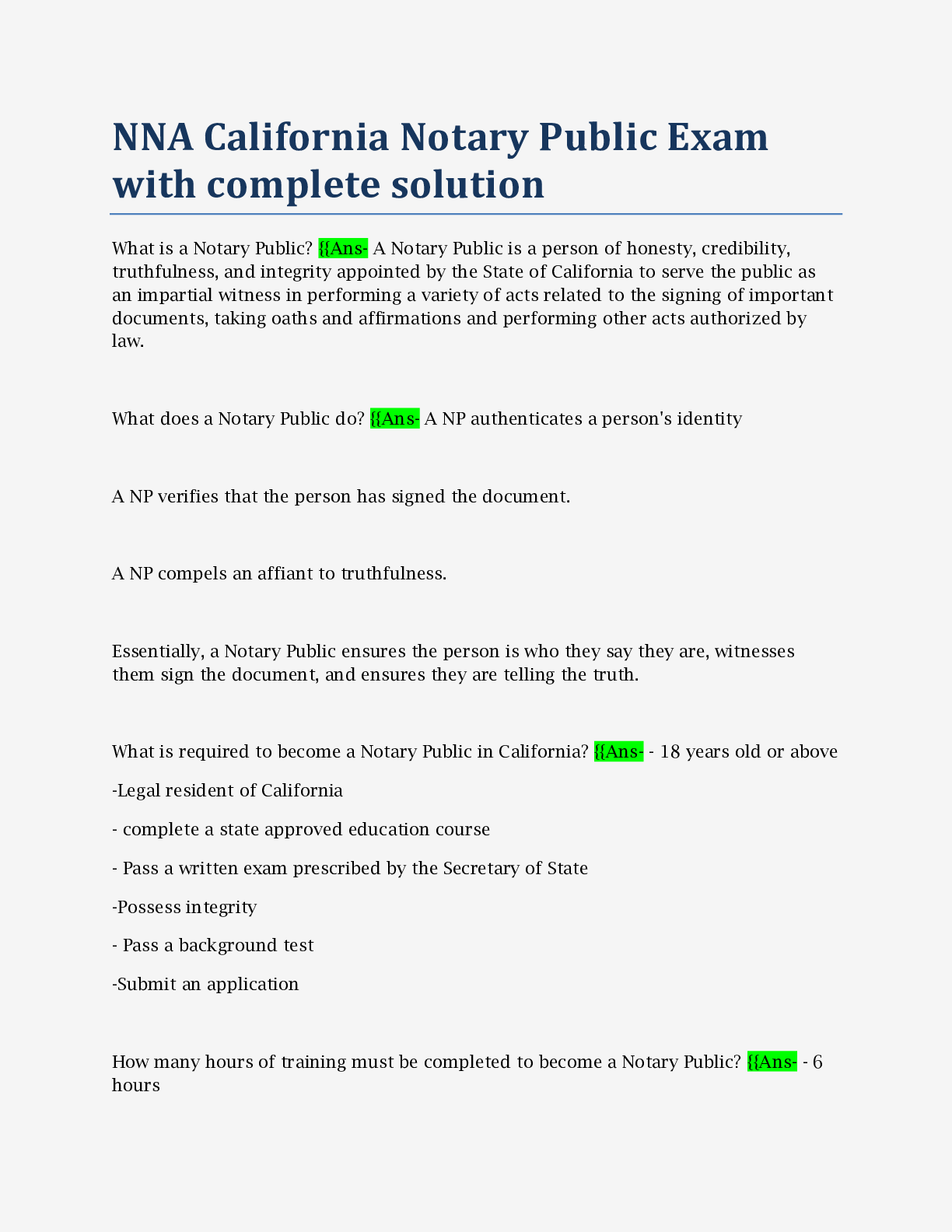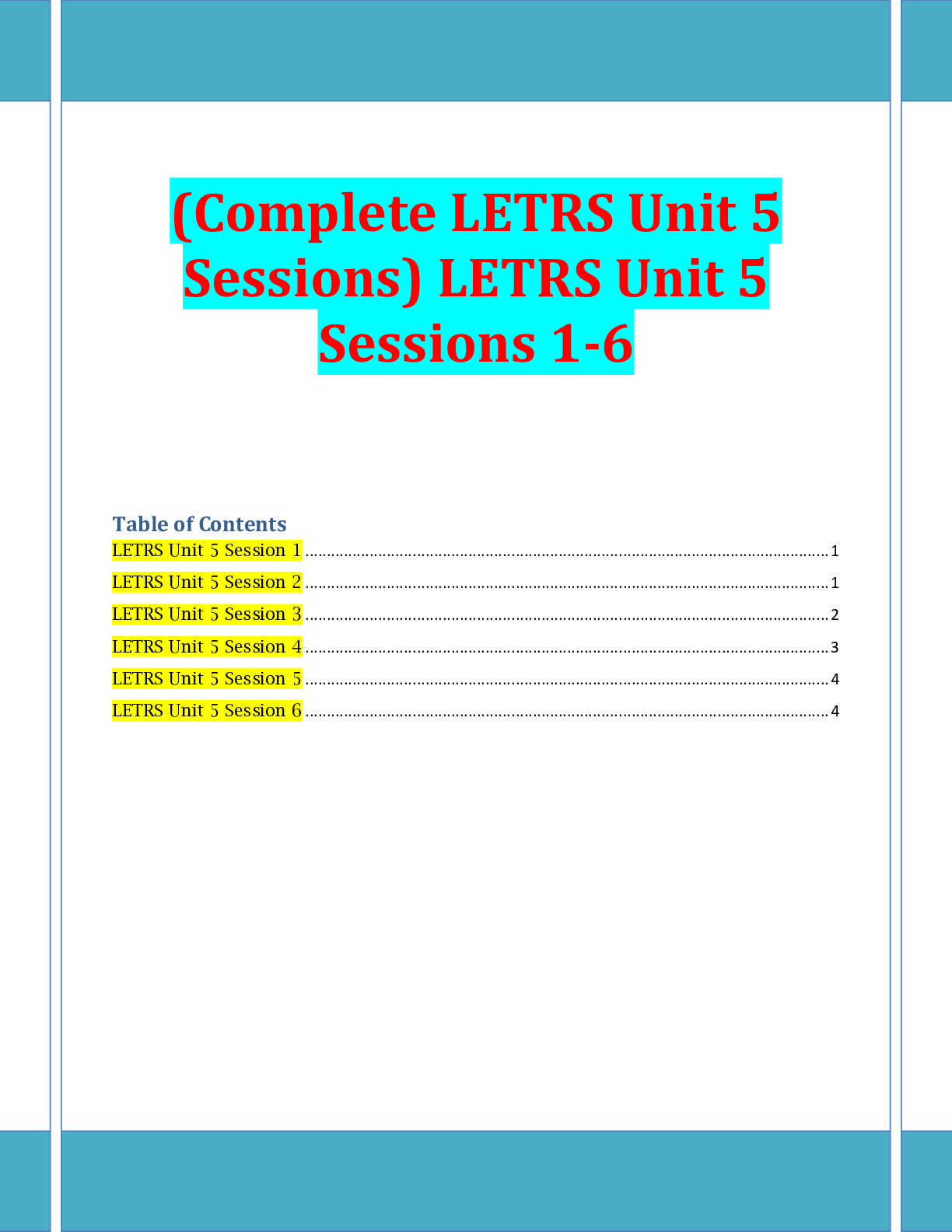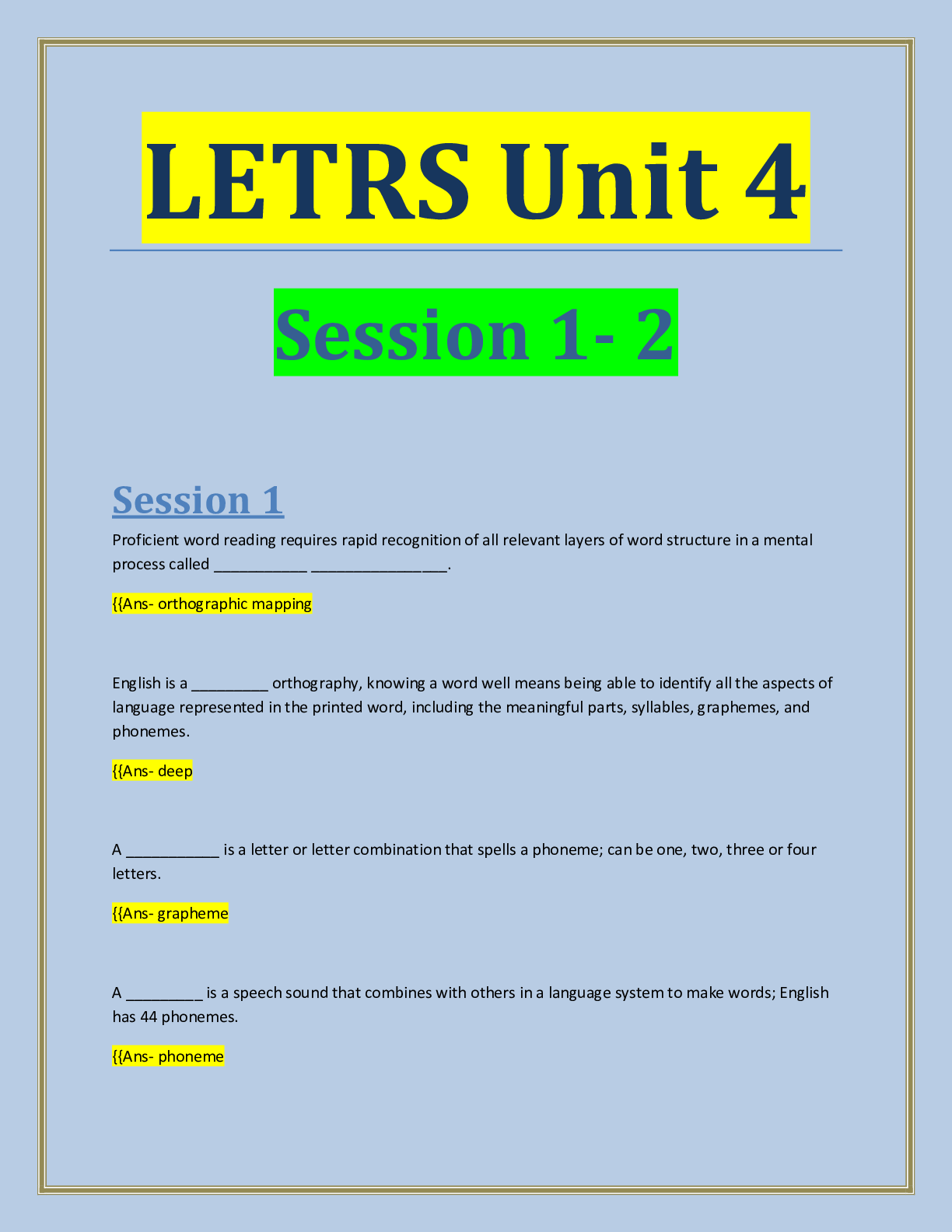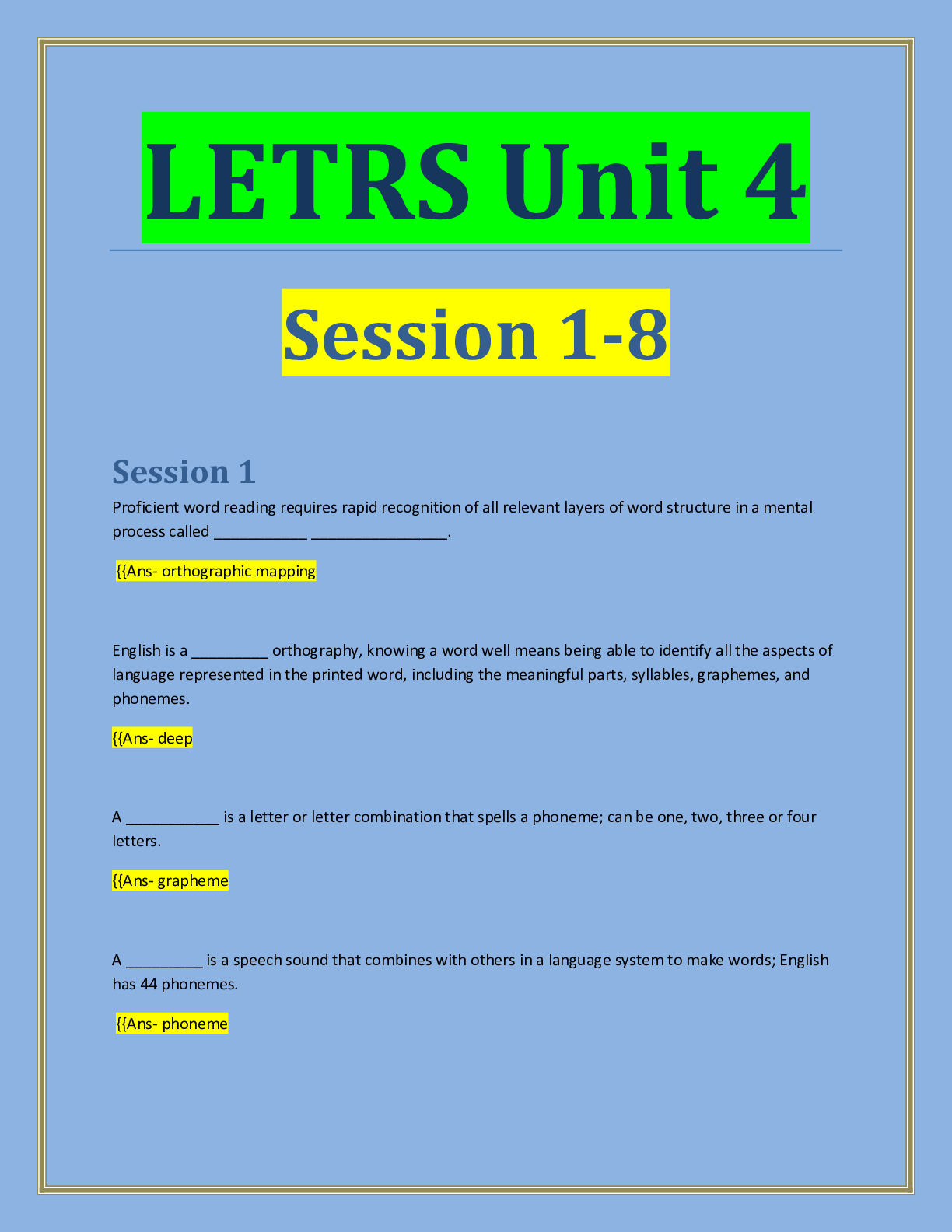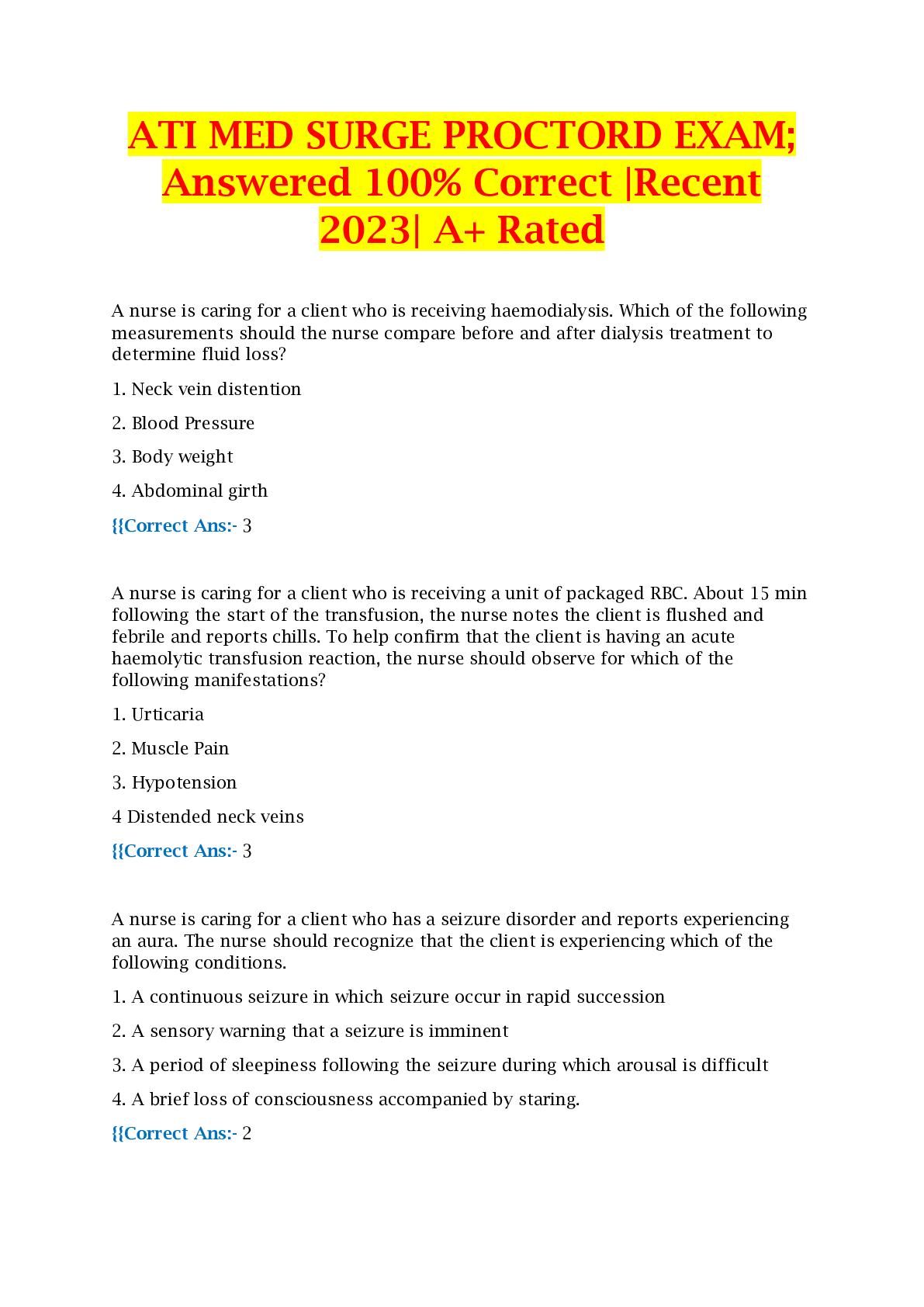Health Care > EXAM > RN Targeted Medical Surgical: Fluid, Electrolyte, and Acid-Base Online Practice 2019 Questions and A (All)
RN Targeted Medical Surgical: Fluid, Electrolyte, and Acid-Base Online Practice 2019 Questions and Answers + Rationale
Document Content and Description Below
RN Targeted Medical Surgical: Fluid, Electrolyte, and Acid-Base Online Practice 2019 Questions and Answers + Rationale A nurse is assessing a client who has dehydration. Which of the following asses... sments is the priority? a. Skin turgor b. Urine output c. Weight d. Mental status [Correct Ans:- Mental status The greatest risk to this client is injury from declining mental status or a fall from worsened dehydration. Therefore, assessing the client's mental status is the priority. A nurse is assessing a client who is using PCA following a thoracotomy. The client is short of breath, appears restless, and has a respiratory rate of 28/min. The client's ABG results are pH 7.52, PoO2 89 mm hg, and HCO3- 24 mEq/L. Which of the following actions should the nurse take? a. Instruct the client to cough forcefully. b. Assist the client with ambulation. c. Provide calming interventions. d. Discontinue the PCA. [Correct Ans:- Provide calming interventions The client's respiratory rate is above the expected range. Calming the client should decrease the respiratory rate, which will cause the client's carbon dioxide levels to increase. This will help correct the pH imbalance. A nurse is caring for a client who has a sodium level of 155 mEq/L. Which of the following IV fluids should the nurse anticipate the provider to prescribe? a. Dextrose 5% in 0.9% sodium chloride b. Dextrose 5% in lactated Ringer's c. 3% sodium chloride d. 0.45% sodium chloride [Correct Ans:- 0.45% sodium chloride A sodium level of 155 mEq/L is an indication of hypernatremia. The nurse should anticipate a prescription for a hypotonic solution. The 0.45% sodium chloride is a hypotonic solution used to provide free water and treat cellular dehydration, which promotes waste elimination by the kidneys.Dextrose 5% in 0.9% sodium chloride is a hypertonic solution. The 3% sodium chloride is a hypertonic solution. Lactated Ringer's solution contains sodium and other electrolytes and is not indicated for hypernatremia. A nurse is evaluating a client who is receiving IV fluids to treat isotonic dehydration. Which of the following laboratory findings indicates that the fluid therapy has been effective? a. BUN 26 mg/dL b. Serum sodium 138 mEq/L c. Hct 56% d. Urine specific gravity 1.035 [Correct Ans:- Serum sodium 142 mEq/L Isotonic dehydration includes loss of water and electrolytes due to a decrease in oral intake of water and salt. A serum sodium level of 142 mEq/L is within the expected reference range and indicates that the fluid therapy has been effective.BUN is elevated. HCT is elevated and USG is elevated. A nurse is providing dietary teaching to a client who has kidney disease. Which of the following food choices should the nurse include in the teaching as containing the lowest amount of magnesium? a. 1 large hard-boiled egg b. 1 cup bran cereal c. 1/2 cup almond d. 1 cup cooked spinach [Correct Ans:- 1 large hard-boiled eggs One large hard-boiled egg contains 5 mg of magnesium. Therefore, the nurse should recommend this food as containing the lowest amount of magnesium.Cereal has 112 mg. Almonds 193 mg and spinach 157 mg. A nurse is caring for a client who is receiving furosemide daily. During the morning assessment, the client tells the nurse that he is "feeling weak in the legs." Which of the following actions should the nurse take first? a. Monitor the client's bowel sounds. b. Review the client's daily laboratory results. c. Auscultate the client's lungs. d. Palpate the client's peripheral pulses. [Correct Ans:- Auscultate the client's lungs Using the airway, breathing, circulation approach to client care, the first action the nurse should take is to auscultate the client's lungs to assess for respiratory changes due to weakness of the respiratory muscles. While reviewing a client's laboratory results, a nurse notes a serum calcium level of 0.8 mg/dL. Which of the following actions should the nurse take? a. Implement seizure precautions. b. Administer phosphate. c. Initiate diuretic therapy. d. Prepare the client for hemodialysis. [Correct Ans:- Implement seizure precautions The client is at risk for seizures due to low excitation threshold as a result of the client's decreased calcium level. The nurse should initiate seizure precautions to prevent injury. [Show More]
Last updated: 2 years ago
Preview 1 out of 12 pages
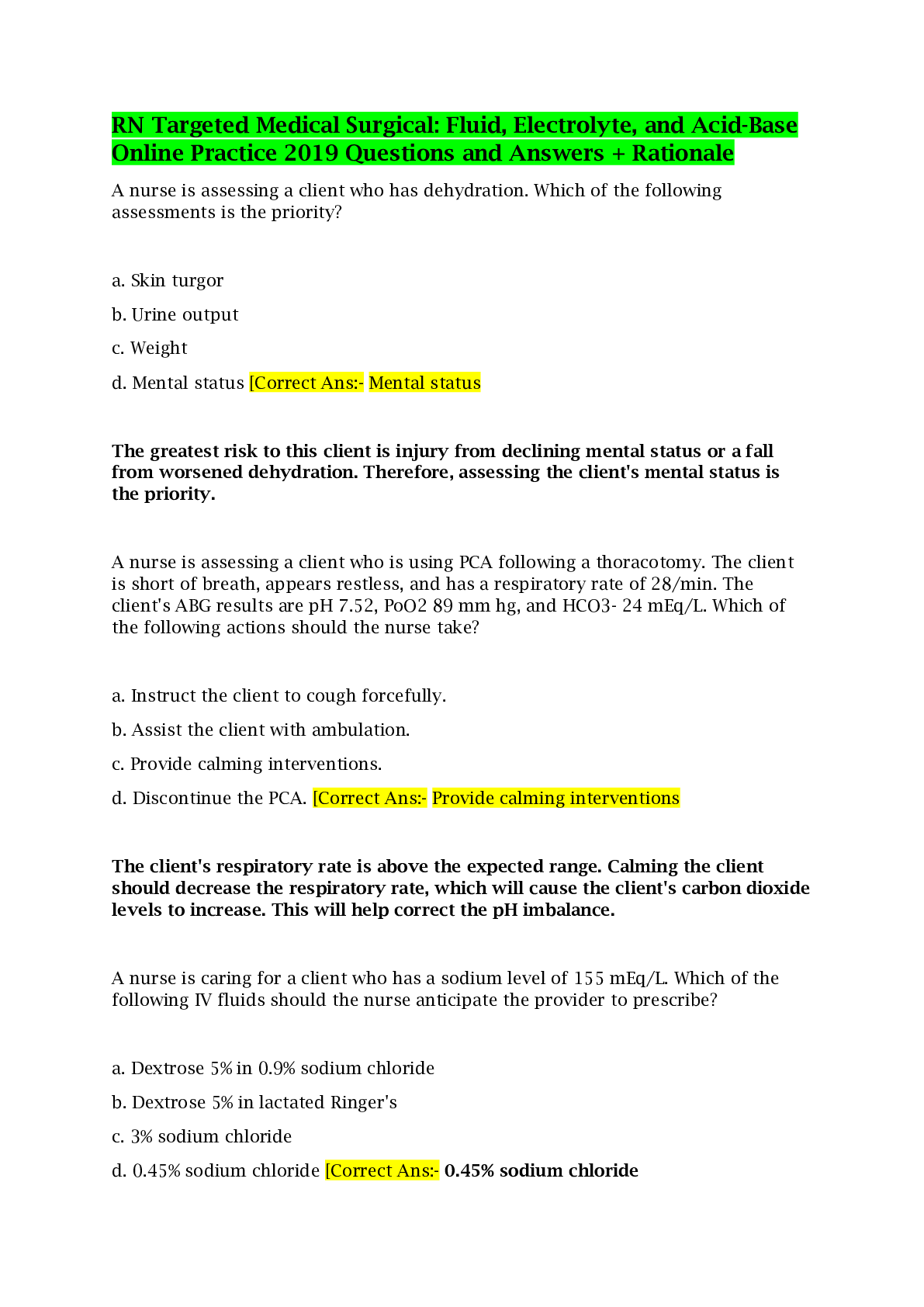
Buy this document to get the full access instantly
Instant Download Access after purchase
Buy NowInstant download
We Accept:

Reviews( 0 )
$8.00
Can't find what you want? Try our AI powered Search
Document information
Connected school, study & course
About the document
Uploaded On
Jul 18, 2023
Number of pages
12
Written in
Additional information
This document has been written for:
Uploaded
Jul 18, 2023
Downloads
0
Views
109

